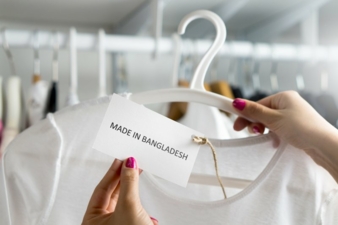29/01/2019 – Coface — auf Deutsch lesen
Bangladesh: textile industry under pressure
31st general elections have been renewed. GDP forecast 2019: 7.2%. Coface Country Risk Assessment: C (high)
The protests that broke out in the weeks leading to the December, 31st general elections have been renewed. Thousands of factory workers from at least 52 factories have gone on strike and taken to
the streets since January 8th, demanding higher wage increases.
A settlement was reached between factory owners and workers union this week-end. Meanwhile, factory owners threatened to close operations if workers did not resume work.
The elections saw Sheikh Hasina secure her fourth term of office as Prime Minister, with her party – the Awami-League – forming a 14-party alliance and winning 288 out of 300 seats in Parliament. The main opposition party, the Bangladesh National Party (BNP) – whose leader Khaleda Zia is serving an extended prison sentence on corruption charges – has since contested the results, capitalizing on the momentum of the protests.
The United Nations, the United States and European Union (EU) have called for an investigation into the electoral process, while condemning the lack of transparency and political freedom in the
run-up to the elections. Following her swearing in, Ms Hasina announced that, contrary to her two previous terms, she will not include representatives of ally parties in her cabinet.
Sheikh Hasina had promised a 51% increase of the minimum monthly wage (up to 8,000 takas, or approximately EUR 83) last September. The increase was subsequently lower for most of the workforce following the elections and in spite of inflation remaining quite high (6% in 2018).
Why
Wages in Bangladesh remain amongst the lowest in the world: the monthly average stands at USD 101 in 2018, compared to USD 135 in Myanmar and USD 170 in Cambodia. The textile sector has flourished in this low-cost environment, and constitutes around 80% of Bangladeshi exports as well as 12% of GDP, and includes global retailers such as H&M, Walmart, and Tesco.
The second-largest global garment exporter after China, Bangladesh is expected to benefit from ongoing trade tensions, attracting manufacturing activities away from China and its higher wages. At the same time, the country faces strong competition from other Southeast Asian and African countries (for example, monthly wages in Ethiopia averaged USD 50 during the same period).
Recent events could pose a challenge for Bangladesh in terms of attracting foreign investment. Compared to 2014 (the start of Sheikh Hasina last term in office), the country has fallen 36 spots in the World Bank’s Ease of Doing Business ranking (176/190 in 2019).
This erosion of the business climate can be traced back to higher political risk. Coface’s Political Risk Index also notes a deterioration in political risks owing to religious fragmentation and terrorist attacks (45% in 2018). Moreover, the textile sector came under scrutiny in April 2013, following the collapse of the Rana Plaza, which killed over 1,100 factory workers.
International investors have been closely following the sector, and the latest events further exacerbate existing headwinds to the sector’s outlook. Although economic growth relies mostly on consumption (70% of GDP), exports have been adding a welcome tailwind (the share of exports to GDP increased from 4% in 1995 to 15% in 2015), facilitating employment (the textile sector currently accounts for around 5% of jobs), and supporting domestic consumption.
Risks
1. In recent years, Bangladesh has managed to lift a large share of the population out of poverty, but this improvement in livelihoods has been accompanied by fewer civil liberties. Foreign direct investment (FDI) inflows have underperformed (0.8% of GDP in 2018) as a result, despite government efforts to boost the country’s attractiveness (the National Development Program includes a Public-Private-Partnership program to attract FDI).
2. Exports largely rely on preferred access to developed markets because Bangladesh is a least-developed country (LDC). However, this status could be revised in light of the latest developments. To put this into context, the EU revised Cambodia’s preferential access to the single market following contested elections in 2018. The EU is Bangladesh’s main trading partner (33% of exports).
3. In 2018, the current account came under pressure (-3.2% of GDP) because of the context of global monetary tightening and investors’ increased risk adversity. The country has adequate buffers (foreign reserves represent around 6.5 months of imports) and a large share of the deficit is financed by remittances from expatriate workers (5.7% of GDP in 2017). However, the government has launched vast infrastructure projects that will increase capital goods imports, and energy import needs are also increasing as national energy production is declining. To prevent steep imbalances, the country needs to secure strong growth and strong exports performances.




